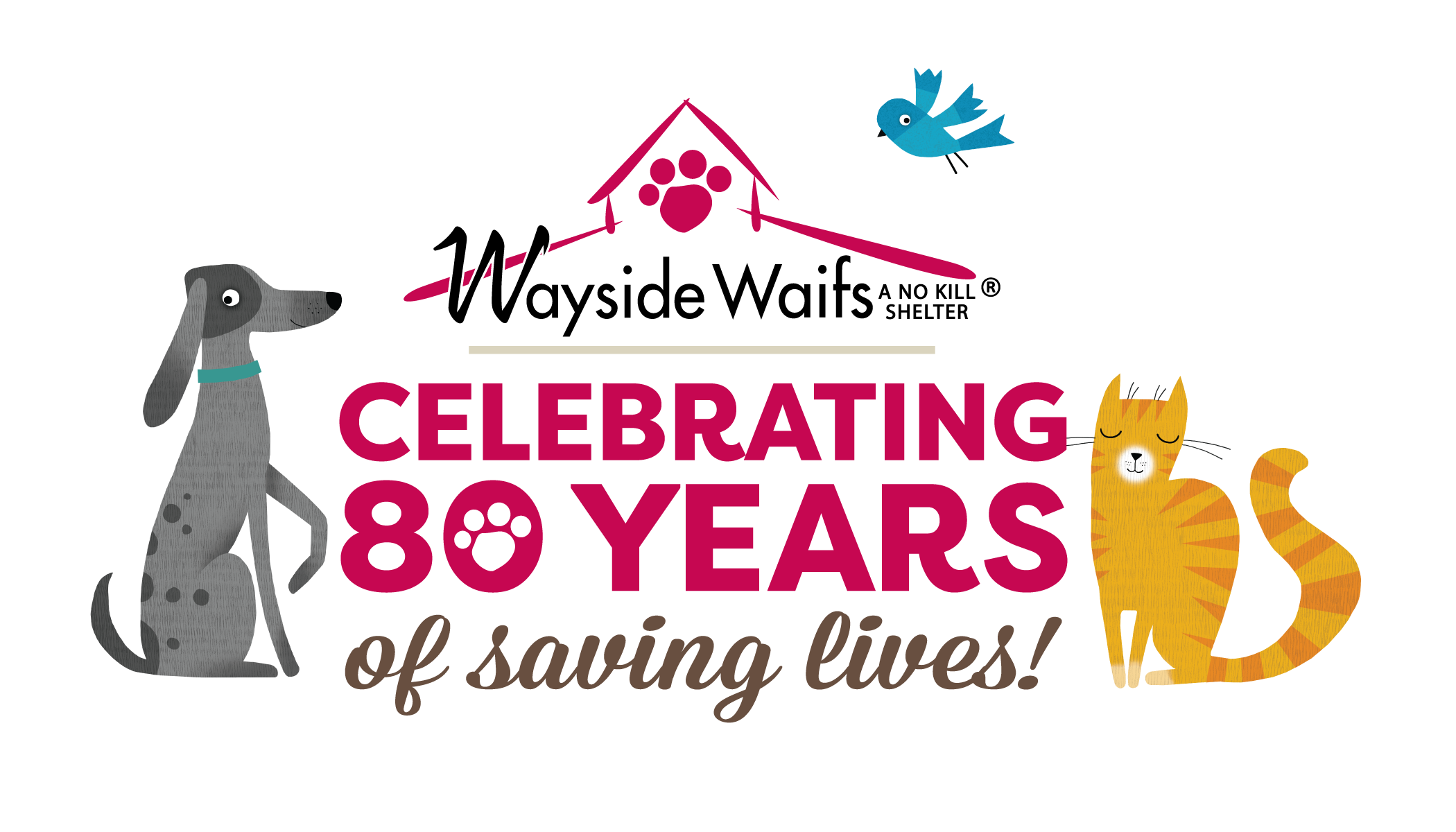
Since April 24, Wayside Waifs has offered a Virtual Adoptions Program to continue our mission of helping homeless animals during this time of social distancing. This extra time at home with your new pet is ideal for bonding and training purposes but can make it difficult when you are wanting to socialize your new puppy. Puppies have a window of learning social and coping skills between 4 and 14 weeks old. Since we are limited to the people and places we can visit during this time it’s important to get creative to be sure your new puppy is developing skills during this crucial stage of development.
The “New Normal” – Scheduling

Although your schedule is likely very different now than it was or will be, it’s important that you get your new puppy accustomed to what their day WILL be versus getting them used to a typical day in this “new normal” we are adjusting to. Although you may be staying home now, it is advisable to give them some time away from the family during the day so they can learn coping skills and how to “be alone.” If you have already been crate training or baby gating your puppy in another room when you leave for short periods of time then you are on the right track! Now try this out when you are home to teach them that quiet time is normal. Extra enrichment such as a special toy or treat for this quiet time will give your puppy something to do independently. Also, playing some light music or having the TV on for them might help make them more comfortable.
Checkout our Behavior Article Library for tips on crate training and enrichment ideas.
New Surroundings

While you may be a bit limited to what you can expose your new puppy to right now, you can start with baby steps by introducing them to different things in and around the house. Start with exposing them to different surfaces; grass, concrete, rocks, water, mud, tile, carpet, etc. Pairing this exposure with yummy treats and positive praise will make it a fun experience. Be sure you are doing this at a pace that is comfortable for your puppy. Some puppies may take longer than others to adjust to new things and allowing them to go at their pace will ensure the experience is positive.
Now that your puppy is confidently exploring new surroundings, encourage them to take the next step in adventuring by climbing and crawling under things. The stairs can be a daunting concept for some puppies and encouraging them with treats and praise can help conquer them. Certain factors may slow this process down such as the size of your puppy, the steepness of the stairs, and if they are hardwood versus carpeted. So be patient as your puppy figures it out and be sure you are there to supervise this process, especially in the beginning.
Car Rides

Getting your puppy used to the car is important to make traveling fun for everyone! Some puppies can initially get motion sickness while riding in the car so keep your trips short and build them up with time. Using the crate in the car is the safest way to transport your puppy and ensures they are secured during your travels. Putting their favorite blanket and/or toy in the crate during travels will help them feel more secure. There are also other options such as doggy seatbelts to be sure they are kept safely in the backseat during traveling. Once your puppy gets comfortable in the car they might enjoy a puppuccino from your favorite coffee shop drive-thru as a reward for their progress which is the perfect time to reward yourself as well for your patient, hard work as a puppy parent!
Preparing for Visitors
Although you may not be getting visitors at this time, you can prepare your puppy for what is expected when someone comes to the door. Have a family member ring the doorbell and “be a stranger” with yummy treats in hand to build up positivity around visitors coming over. Doing this often will help remove the fear of the doorbell and associate it with meeting new friends.
Work on Leash Skills
Getting your new puppy used to leashes early is a great way to build up your future walking or running partner. Get your puppy comfortable with having the leash on; start by clipping the leash to your puppy’s collar or harness and letting them walk around the yard comfortably while you hold onto the leash. You may need to gently encourage them with treats and praise. If they don’t seem bothered by the leash then start with small distances around the neighborhood and slowly build it up. If they aren’t confidently walking around the yard with the leash attached then just keep practicing until they are. Be prepared for new things such as passing cars, strangers, and other dogs which might be a bit scary for your puppy. Have their favorite treats ready to reward them for being brave during these new encounters.

While it is tempting to allow our puppies much more freedom and slack on our scheduling during this time, it can come back to bite us as we head back to work and our “normal” routine. A little forethought and preparation now will greatly increase your chances of a well-rounded adult dog.
Watch more tips here!
If, after trying these suggestions, you are experiencing undesirable behaviors with your new pet, submit questions to our behavior team by clicking here.
